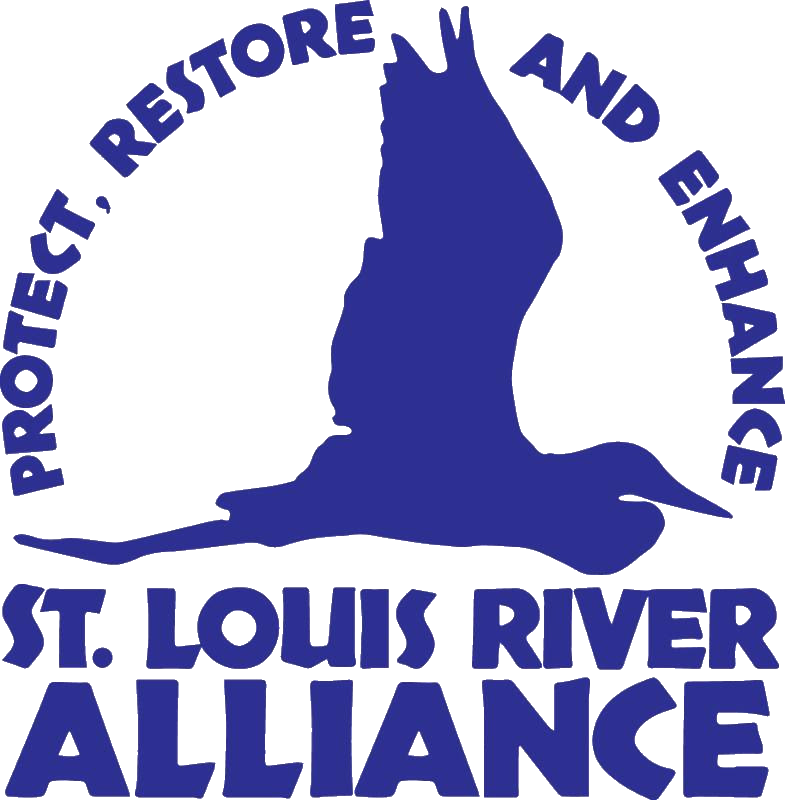
RESOURCES
Area of Concern
Please visit our Area of Concern Resource page for progress reports and additional information.
Aquatic Invasive Species Sentry Program (pdf)
The AIS Sentry Program educates and empowers community members to recognize and report aquatic invasive species throughout St. Louis County. The AIS Sentry Program helps prevent & limit the spread of AIS in waters throughout St. Louis County.
Duluth Superior Birding Map (pdf)
This map highlights the many birding hotspots throughout the St. Louis River Estuary, created and distributed by the Duluth Audubon Society.
Clean Water Campaign Fact Sheet (pdf)
The St. Louis River Alliance is supporting the Minnesota Pollution Control Agency’s (MPCA) request for $12.705 million in 2016 bonding for phase One and $12.705 million for phase Two funds for restoration of the headwaters of Lake Superior—the St. Louis River estuary and Duluth/Superior harbor. These funds will trigger $47.5 million in federal funds as a part of a multi-level effort to clean up the Great Lakes, to clean up polluted riverbed sediment and industrial waste from the St. Louis River estuary. State funding is crucial to access the 65% federal cost share match.
Historic Reconstruction of Property Ownership & Land Uses along the Lower St. Louis River (pdf)
This project was conducted to identify potential pollution problems associated with historic property ownership and related land uses along the lower St. Louis River. It supplements and updates the historic land use information that was published in the St. Louis River System Remedial Action Plan (RAP), Stage One, in April 1992 (especially Table III.2, pp. III-12 through III-16). This report does not attempt to repeat, supplement or update the entire Stage One document.
Lower St. Louis River Habitat Plan (pdf)
Previously funded by U.S. Environmental Protection Agency under Grant Contract Number X995385010 with additional support from the Minnesota Department of Natural Resources Conservation Partners Program, the U.S. Fish and Wildlife Service, and The Nature Conservancy.
The vision for the Lower St. Louis River is of a thriving human community connected to the aquatic and terrestrial ecosystems of the river. The river ecosystems are diverse, productive and healthy, with natural processes (such as hydrologic regimes, biological productivity, and nutrient cycling) operating within the natural range of variation. The diversity of plants and animals and the composition of natural communities present at the time of European settlement is reflected in the sustainable ecosystems of today.
Onigamiinsing Dibaajimowinan-Duluth's Stories Website
Created by the Fond du Lac Band of Lake Superior Chippewa, this website shares the deep history and continuing presence of Native people within Duluth.
Resilient Futures: Exploring Resilience in the St. Louis River Estuary Communities (pdf)
This publication, a collaboration between the St. Louis River Alliance, Duluth LISC, and the Design Duluth Studio, is supported by a Bush Foundation Community Innovation Grant, the University of Minnesota Imagine Fund, the University of Minnesota School of Architecture and Department of Landscape Architecture.
Shipping/Port History | Duluth Seaway Port Authority Website
Learn about the port of Duluth-Superior which sits at the westernmost tip of the Great Lakes-St. Lawrence Seaway – 2,342 miles from the Atlantic Ocean. It’s where the St. Louis River fans out to create a natural harbor, sheltered from Lake Superior by a narrow peninsula that stretches nine miles from Minnesota to Wisconsin.
